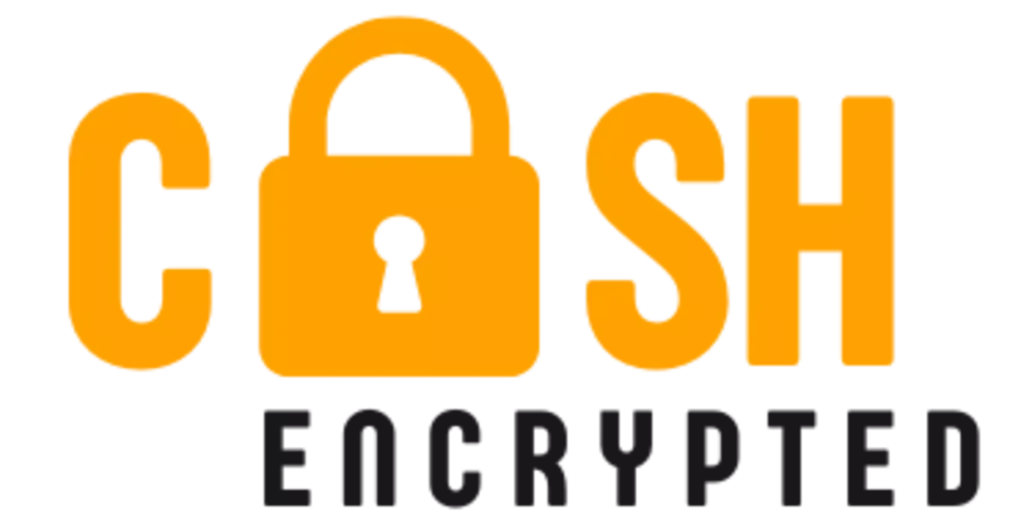Decentralized Finance, or DeFi, represents a profound shift in the way we interact with financial systems. By leveraging blockchain technology, it offers new opportunities for peer-to-peer transactions, lending, and borrowing. This article delves into the foundational principles of DeFi, exploring its core components and how they redefine traditional finance. Designed for those with a basic understanding, the content opens the door to deeper insights into this innovative ecosystem.
Understanding Blockchain Technology
Blockchain technology underpins decentralized finance (DeFi), offering a transparent and secure framework for financial activities. At its core, blockchain is a decentralized ledger recording transactions across numerous computers. This structure prevents a single point of failure, enhancing security and data integrity. Each transaction is stored in a block, linked to previous blocks, creating a chain.
Smart contracts are pivotal in DeFi, as they automate transactions without intermediaries. These self-executing contracts with terms directly written into code facilitate seamless, trustless operations. They reduce the risk of manipulation and offer a higher degree of transparency and efficiency compared to traditional contracts.
Consensus mechanisms are essential for blockchain networks, ensuring that data is consistently updated and verified across all nodes. Different consensus algorithms, like proof-of-work (PoW) and proof-of-stake (PoS), provide various security and efficiency levels. PoW involves solving complex puzzles to validate transactions, while PoS relies on validators holding and staking cryptocurrencies.
Ethereum is a prominent blockchain in DeFi due to its robust smart contract capabilities and a vast developer community. Its flexible programming language allows for the creation of decentralized applications (dApps). Despite its popularity, Ethereum faces challenges, such as high transaction fees and scalability issues. Other blockchains, like Solana, offer unique features to tackle these problems. Solana, for instance, boasts high throughput and low transaction costs, appealing to users seeking scalable solutions.
To further explore DeFi tools and their applications, you can read about the important DeFi tools that are shaping this evolving landscape.
Core Components of DeFi
Decentralized Finance (DeFi) operates on a network of core components that allow it to provide financial services without traditional intermediaries. Among these, lending platforms play a crucial role. They allow users to earn interest or borrow assets by leveraging cryptocurrencies as collateral. These platforms function through smart contracts, a hallmark of DeFi that ensures transparency and automation. Borrowers deposit cryptocurrency as collateral, and lenders provide liquidity to the platform, earning interest in return. Smart contracts manage these transactions, ensuring risk minimization and trustless interaction.
Another fundamental component is decentralized exchanges (DEXs). DEXs enable direct peer-to-peer trading of digital assets without involving a central authority. They utilize an automated market-making system, which matches buy and sell orders without human intervention. This system enhances liquidity and fairness while reducing transaction fees. Moreover, DEXs empower users with full control over their crypto assets, providing a secure trading environment resistant to censorship.
Stablecoins represent another pillar of DeFi. These digital currencies are pegged to stable assets like fiat currencies, thus minimizing volatility. Stablecoins provide a reliable medium of exchange and store of value, essential for day-to-day transactions within the DeFi ecosystem. By anchoring their value to stable assets, stablecoins facilitate seamless and risk-averse interactions among DeFi components, ensuring stability in an otherwise volatile environment.
These components are deeply interconnected within the DeFi space. Lending platforms often integrate DEXs to provide liquidity, while stablecoins are fundamental for collateral and trading. Notably, they operate without central authorities, fostering an inclusive financial system accessible to anyone with an internet connection.
The impact of these components is profound. They democratize finance, allowing users to engage in lending, borrowing, and trading without geographical or institutional barriers. DeFi has transformed financial services by leveraging blockchain technology and offering transparency and control. As we explore the DeFi landscape further, understanding these core components provides crucial insights into how DeFi continues to reshape traditional financial paradigms.
For readers interested in delving deeper into DeFi tools that facilitate these interactions, the important DeFi tools offer comprehensive insights into maximizing DeFi participation.
Smart Contracts: The Driving Force
Smart contracts are self-executing agreements with terms encoded directly into code. They eliminate the need for intermediaries by automating and enforcing transactions on the blockchain. This transformative feature is the bedrock of decentralized finance (DeFi), driving efficiency and reducing costs.
One of the primary advantages of smart contracts is their ability to autonomously execute transactions when preset conditions are met. This ensures trust and transparency, as all parties involved can verify the contract’s code and logic. Additionally, they significantly diminish the risk of errors compared to manual processing.
Despite their benefits, smart contracts face several challenges. Coding errors can lead to exploits, making security a critical concern. Vulnerabilities can be catastrophic, resulting in financial losses. As such, robust security measures, like comprehensive audits and formal verification, are imperative. These measures help ensure code reliability and minimize potential threats.
Moreover, developers must consider the immutability of smart contracts. Once deployed, a contract cannot be altered; hence, review and testing phases are crucial. Learning from previous high-profile breaches, the DeFi community continues to enhance security practices, fostering a safer ecosystem.
When it comes to practical use, DeFi applications utilizing smart contracts are flourishing. Aggregators, for example, leverage smart contracts to automate transactions across multiple platforms, optimizing returns for users. Lending and borrowing protocols are another domain where smart contracts excel. They enable instantaneous loan agreements following condition checks, removing traditional banking delays.
For those interested in exploring crucial tools within the DeFi landscape, more information can be found in important DeFi tools. This resource provides additional insights into the various applications and innovations thriving due to smart contracts.
Smart contracts are indeed fueling the DeFi revolution. By facilitating trustless and efficient interactions, they embody the core essence of decentralized systems, creating a more connected and inclusive financial world.
Risks and Challenges in DeFi
Decentralized Finance (DeFi) offers exciting opportunities, but it is not without significant risks and challenges. Security vulnerabilities pose a crucial threat. Smart contracts, the backbone of DeFi, are susceptible to bugs and exploits. Hackers often target these contracts to drain funds, undermining user trust and causing significant losses.
Additionally, the lack of regulation creates a wild west scenario. This environment can foster innovation but also leads to scams and fraudulent schemes. Users may struggle to find recourse in the event of disputes or losses, as traditional regulatory frameworks are absent. The DeFi community must balance innovation with user protection to ensure sustainable growth.
Scalability remains a prominent obstacle. As DeFi platforms gain popularity, the underlying blockchain networks often face congestion and high fees. This can deter users and limit adoption. To address these issues, layer-2 solutions and alternative blockchain networks aim to enhance transaction speed and reduce costs.
These risks significantly impact users’ decisions and the broader ecosystem’s stability. When users face security breaches or high fees, their confidence in DeFi diminishes. This can lead to reduced participation and slower ecosystem growth. To counter this, projects need to invest in thorough code audits and security practices.
Strategies to mitigate challenges in DeFi are continuously evolving. Enhanced smart contract auditing and insurance solutions are gaining traction. By auditing code regularly and offering users protection against losses, the ecosystem can boost trust. Moreover, cross-chain interoperability efforts aim to diversify options, easing congestion on single networks.
Efforts are also underway to introduce cautious regulatory frameworks that safeguard users without stifling innovation. These frameworks could provide a safety net for novice users and encourage more mainstream participation.
For more information on crucial tools that can aid in navigating the DeFi landscape, readers can visit our guide on DeFi wallets and blockchain technology: explore critical DeFi tools. By adopting such tools, users can better manage and secure their assets, embracing DeFi’s potential while staying protected.
The Future of Decentralized Finance
The future of decentralized finance (DeFi) promises exciting transformations, driven by technological advances and deeper integration with traditional finance systems. One notable development is the emergence of cross-chain interactions, which allow seamless transactions across different blockchain networks. This technology will enable users to access diverse DeFi services without being confined to a single blockchain, enhancing interoperability and user freedom.
Improved user interfaces are another critical trend. Enhanced design will make DeFi platforms more intuitive and user-friendly, bridging the gap for non-tech-savvy users. As these interfaces evolve, they are likely to incorporate more educational tools, aiding user understanding of complex financial products.
Integration with traditional finance could bring unprecedented opportunities for DeFi. Financial institutions may leverage DeFi’s transparent and borderless nature to offer innovative financial products. This hybrid model could result in more inclusive financial systems, bridging the gap for underbanked populations.
Security will be paramount as DeFi platforms continue to grow. Advanced cryptographic techniques and smart contract audits will play crucial roles in safeguarding user assets. Improved security measures will likely increase user trust, driving widespread adoption.
Moreover, DeFi could revolutionize lending and borrowing by creating more efficient and equitable markets. Algorithmic credit scoring, devoid of human biases, could offer fairer access to financial services. This could democratize financial opportunities by allowing users worldwide to participate.
Decentralized autonomous organizations (DAOs) may also gain prominence, enabling communities to govern DeFi protocols collectively. This democratized governance could spur innovation and align protocols with user interests, fostering a more resilient ecosystem.
As these developments unfold, one can explore further details on crucial DeFi tools and features through resources like the important DeFi tools guide. These innovations collectively signal a robust future for DeFi, characterized by greater accessibility, efficiency, and user empowerment.
Final words
DeFi continues to revolutionize financial ecosystems by offering decentralized alternatives to traditional services. Its rapid development promises new opportunities and challenges that will shape the future of finance. As we move forward, understanding these concepts equips you to engage with DeFi responsibly and effectively. Join our community for more insights and updates on decentralized technologies that matter.
Have you been concerned about your health? Visit our partner
Learn more: https://pleasureinhealth.com/
About us
Pleasure in Health offers comprehensive wellness programs tailored to individual needs, focusing on holistic health solutions that integrate with modern lifestyle choices.


